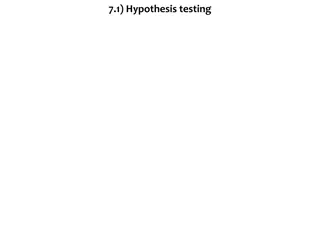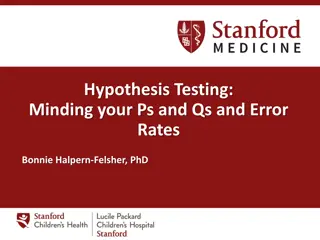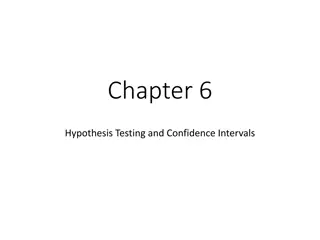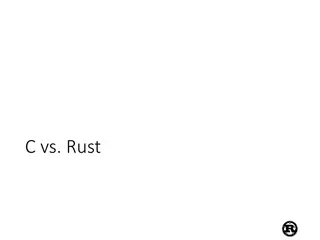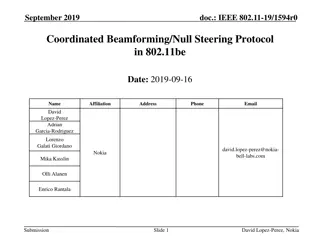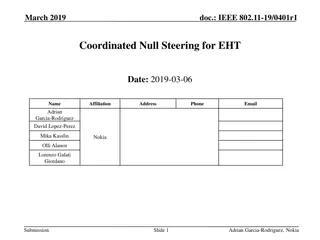
Rabbit Nutrition and Digestive System Insights
Explore the unique adaptations of a rabbit's digestive system to its herbivorous diet, including details on the stomach, small intestine, caecum, cecotrophes, and cecotrophy process. Learn about the importance of cecotrophy, nutrient absorption, and the distinct functions of different digestive system components in rabbits.
Download Presentation

Please find below an Image/Link to download the presentation.
The content on the website is provided AS IS for your information and personal use only. It may not be sold, licensed, or shared on other websites without obtaining consent from the author. If you encounter any issues during the download, it is possible that the publisher has removed the file from their server.
You are allowed to download the files provided on this website for personal or commercial use, subject to the condition that they are used lawfully. All files are the property of their respective owners.
The content on the website is provided AS IS for your information and personal use only. It may not be sold, licensed, or shared on other websites without obtaining consent from the author.
E N D
Presentation Transcript
Rabbit Nutrition
Digestive System Of Rabbit The digestive system of rabbit is adapted to an herbivorous diet. The caecum and colon have relative importance when compared with other species. From teeth to an enlarged caeco-colic segment with active microbiota. Separation of caecal digesta particles allowing for cecotrophy.
Stomach Stomach is partially filled. The pH of adult and growing rabbits' stomach is very acid (1.5 to 2). The capacity of stomach is 34% of total digestive system capacity. Fundic region acts as a storage cavity for caecotrophes.
Small Intestine The small intestine pH is 7, it is 3-meter-long where the secretion enzymes and buffers. Greater part of digestion and absorption take place in small intestine. Digestibility at the end of the ilium accounts for 80-100% of total digestibility. of bile, digestive
Caecum It is the largest part of the tract. Caecal contents are slightly acid (5.4-6.8). Depending on microbial activity and feeding pattern. Colon Divided into 2 portions:- The proximal colon(35 cm). The distal colon (80-100 cm).
Cecotrophes Night or soft feces result from fermentation of food in cecum. Nutrient rich passed out of body like feces. It is re ingested by the animals. Cecotrophes has twice of protein and half of fiber of typical hard feces. It is rich in vitamin K and B.
Cecotrophy It begins at 3-4 weeks of age. Intestinal contents enter the hindgut at the ileocecal colonic junction and uniformly disperse in the caecum. Contraction of caecum moves material into the proximal colon. Peristaltic action particles (dashes) down the colon for excretion as hard faeces. moves large fiber
Contractions of haustrae of the colon move small particles (dots) and fluids backwards into the caecum. Small particles and fluids are separated from fiber. Soft faeces are excreted which is the opposite to that of feed intake and hard faeces.
Soft Faeces Soft faeces production increases with age. Maximum producing (maximum growth, greatest feed intake). Stabilize producing of soft faeces at 11 to 19 weeks (growth rate decrease, feed intake increase). Lactating does show greater production (higher feed intake). at 9-11 weeks
Nutritional Value Of Soft Faeces It contains greater proportions of protein, minerals and vitamins than hard faeces. Its protein represents from 15 to 22 % of the total protein intake. It is high in essential amino acids (lysine, threonine and sulphus amino acids). Microbial activity is responsible for high content of K & B vitamins in soft faeces.
Cecal Digestion Of Fiber 1- Microbial Activity:- Fiber is digested depend on its hydrolysis and fermentation by the digestive microbiota which secrete enzymes. Greater enzymatic activity for degrading pectin and hemicellulose than for degrading cellulose.
2- Fermentation:- VFAs are the main products of carbohydrate microbial fermentation. VFAs are rapidly absorbed in hindgut and provide energy. VFAs profile, predominance of acetate then butyrate and then propionate.
3- Cecal pH:- Cecal pH gives an estimation of the extent of the fermentation. It decreases with ingredients such as sugar beet pulp and soy hull. It increases with cereal straw. inclusion of
Kit Feeding Females give birth to naked and blind young in a nest after 31-33 days of gestation. Nipple searching behavior is controlled by pheromonal signal. Rabbit suckles their litter for 3-5 min once a day or twice a day. From birth to 3 weeks, kits drink large amount of milk during a once daily nursing, this about from 15 to 25 % of BW.
Solid Feed Intake At 16-18 days, kits begin to eat solid food and decrease milk intake. The solid food intake increases from 25 days to reach 40-50 gm/day by 35 days. From 3 to 7 weeks, the caecum is filled by digesta and microbiota. The intake of soft feces increase until 2 months of age and then steady.
Young Doe Feeding Weaning at 3-4 weeks age. From weaning to 11-12 weeks, feeding like rabbits kept for meat production. from puberty to first mating (16-18 weeks), feeding permit correct morphologic development and avoid over fattening. At 17 weeks, breeding rabbits given ad libitum access to diet. and reproductive
In young doe, feeding restriction may reduce voluntary feed intake pregnancy and lactation and increase the risk of a negative energy balance. The administration of high fiber, low energy diets to young females before the first mating increase voluntary intake during growth and pregnancy. in the following
Restricted Feeding Before mating, 80-90 % feeding restriction may be applied to young does to obtain target weight at insemination. 4-7 days before the first insemination, flushing with lactation diet given to avoid a reduction in sexual receptivity. Feed restriction continue in the first part of pregnancy. Ad libitum feeding recommended during the last 2 weeks of pregnancy. with lactation diet is
Reproducing Doe Feeding During early pregnancy, increasing dietary DE concentration usually reduce DM intake. During last week of pregnancy, voluntary feed intake is limited by physical intake capacity. During lactation, feeding high digestible diets increases DE intake. A higher dietary energy supply determines an increase of milk production, impairing effect on body condition.
Energy Metabolism Factors Influence Energy Metabolism:- 1. Body size. 2. Breed. 3. Age. 4. Sex. 5. Environment(temperature, humidity and air speed). 6. Productive functions (maintenance, growth and lactation).
Energy Requirement Appetite in rabbits is regulated by a chemostatic mechanism. Growing rabbits naturally consume sufficient feed to meet their energy requirement. Reproducing does requirement for pregnancy and lactation that are not covered by an adequate voluntary intake. Voluntary energy intake is proportional to metabolic live weight (LW0.75). have high energy
Energy Requirement For Growth:- Maximum average daily growth is achieved when dietary DE concentration is about 10- 10.5 MJ/kg. An increase in this level affects body gain composition and the partition of energy retained as protein and fat.
Energy requirement for pregnancy During early and mid gestation (0-21 days):- The LW increases similarly to that of non pregnant does. During late pregnancy (21-30 days):- Protein and fat losses and transfer of energy to the rapidly growing fetuses. Non pregnant does:- Continue to gain weight and retain body energy.
Protein Requirements Crude protein (CP) and apparent digestible protein (DP) are the most used units. Rabbit have specific requirements. Protein requirements:- At birth 12%. At weaning (35 days) 17%. At 10-12 weeks 20%. amino acid
Pregnancy and lactation protein req:- 1- In the early gestation (0-21 days):- Rabbit does retain protein in their body. 2- Late period of pregnancy (21-30 days):- They transfer some protein from body to the rapidly growing fetus.
Amino Acid Requirements Amino acid supply through cecotrophy is adequate to cover requirements. In lactating does, the contribution of cecotrophy are:- 1. Sulphur amino acid 17 % 2. Lysine 18 % 3. Threonine 21 % The most limiting essential amino acids in rabbits are:- 1. Methionine. 2. Lysine. 3. Threonine.
Minerals Rabbit meat is:- poor in sodium. Rich in potassium and phosphorus. Rabbit milk is:- High in ash especially in ( Ca, P and Na) Ca : p 12:1 Rabbit milk contain protein and fat four times more than that present in cow milk.
Vitamins Fat soluble vitamins absorbed with dietary lipid. Stored in the body (liver and fat tissue). Excreted in faeces via the bile. Water soluble vitamins Not stored but rapidly excreted. Excreted mainly through urine.
Fiber Rabbits achieve a good growth performance on high fiber diets. Maximum growth and reproductive performance reached at:- 1. 18-22% ADF. 2. 32% NDF. 3. 18% starch. Roughage feed stuffs as alfalfa, dry grasses and hay. Lucerne hay is highly palatable and provide long and digestible fiber which allow an adequate transit time of the digesta.
Fat Supplementation Fat inclusion 3% has a positive effect on energy digestibility and feed efficiency. The beneficial effect of fat inclusion were more pronounced for does than for growing rabbits. The inclusion of 3.5% fat in doe diets increased DE intake, promote milk yield and litter weight at weaning. Diets rich in n-3 PUFAs decrease mortality during lactation and improve the reproductive efficiency of does.
Feeding System 1- Effect of diet presentation:- Lower amounts of feed resulting in lower daily weight gain, inferior feed conversion ratio and lower slaughter yield. 2- Pellet size and quality:- Pellet preferable length is between 8 and 10 mm. Range of 3-4 mm leads to pellet wastage.
3- Feed storage:- Storage time should be limited to 3-4 weeks. 4- Number of diets:- Two or three diets are economically optimum. 5- Feed intake:- Feed intake increases with age.
Nutritional Problems Enteritis Most cases of enteritis are enterotoxaemia that caused by bacterial toxins elaborated in the gut. It is caused by certain species of clostridium & toxigenic strains of E.coli. When the diet rich with starch it leads to production of high quantity of VFAs causes temporary drop in cecal pH, killing normal microbes and stimulate pathogenic bacteria.
Post weening enteritis can be minimized by:- Feeding low energy, high fiber diet. Fiber should be 12-15%. Less than 20% cereals grains. Wheat middlings substitute for grain in rabbit diets. are an excellent
Hypomotility It the lack of normal gut contraction. Low fiber diet is a contributing factor to enteric problems. The cecum become impacted with mucous. The goblet cells of the colon mucosa secrete increased quantities of mucous resulting in large amount excreted with feces. Dietary fiber help in prevent cecal impaction.
Fur chewing It is common problem in rabbit where it consume their own hair leads to hair ball in the stomach. Animals with hair ball stop eating and then die. This occur when diet contain inadequate fiber.
Pregnancy toxemia May develop after kindling, if their feed intake is inadequate. The diet is too low in energy.
Nutritional effect of fur The glossiness can be influenced by the fat content of the diet. Copper is involved in melanin synthesis. Copper deficient cause graying of normally black fur. Iron deficiency causes unpigmented fur (colon fur). Biotin deficiency causes pigmentation. loss of normal hair





